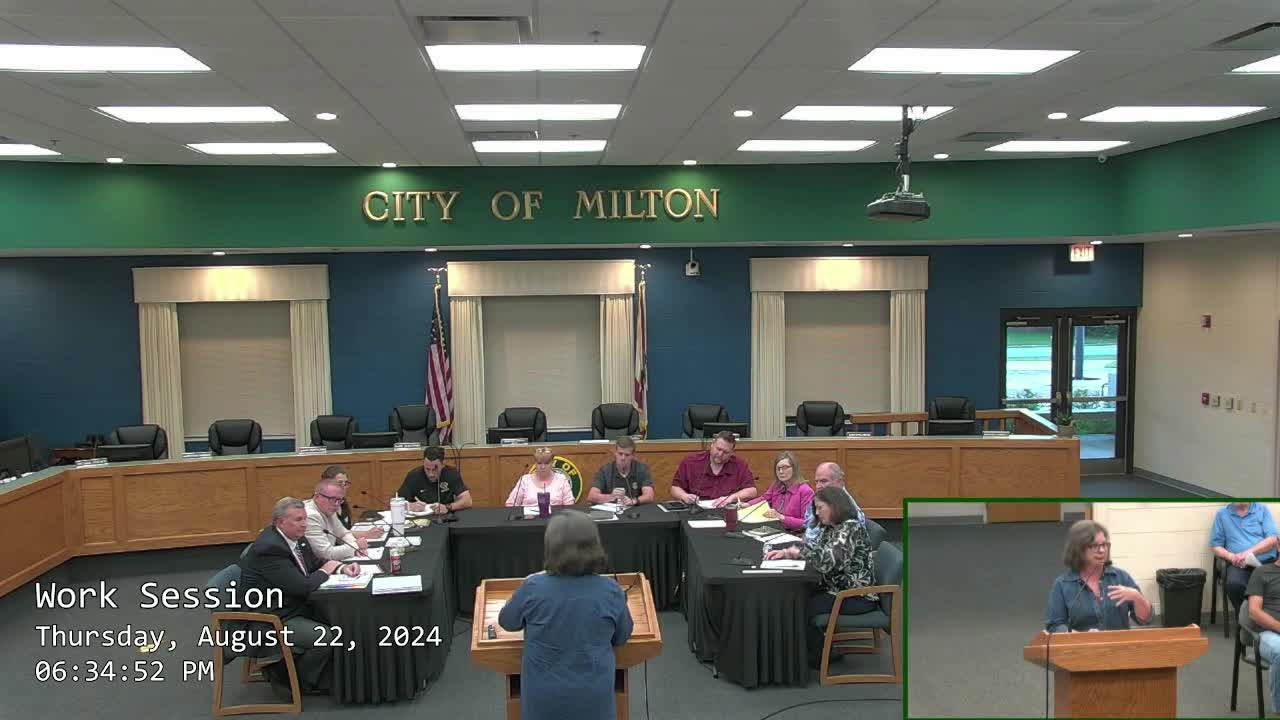Citizens raise alarm over PFAS contamination in drinking water
August 22, 2024 | Milton, Santa Rosa County, Florida
This article was created by AI summarizing key points discussed. AI makes mistakes, so for full details and context, please refer to the video of the full meeting. Please report any errors so we can fix them. Report an error »

In a recent government meeting, officials discussed the implications of upcoming environmental standards on local water treatment facilities, particularly concerning the management of PFAS (per- and polyfluoroalkyl substances), often referred to as \"forever chemicals.\" The conversation highlighted concerns over the estimated $70 million cost of a new water treatment plant, which may require an additional $11 million to retrofit for future standards that have yet to be established.
Officials acknowledged the uncertainty surrounding these standards, with one member expressing frustration over the lack of clarity, likening the situation to \"hitting a dartboard in a pitch black, dark room.\" The discussion revealed a significant public concern regarding the potential spraying of treated effluent containing PFAS over aquifers that supply drinking water, with one participant noting that current levels of PFAS in treated effluent exceed drinking water standards by 35 times.
The debate intensified as officials grappled with the sources of PFAS contamination, which include septic tanks, industrial uses, and agricultural runoff. While some argued for proactive measures to address these chemicals, others pointed out the limitations of local authorities in controlling upstream sources of contamination.
The meeting also touched on the need for additional land for future wastewater treatment capacity, with officials acknowledging that current land acquisitions may not suffice. Alternatives to traditional spray field methods, such as rapid infiltration basins, were suggested as potential solutions for effluent disposal.
As the meeting progressed, it became clear that the community's concerns about water safety and environmental responsibility are at the forefront of local governance. The discussions underscored the complexity of managing water resources in the face of evolving regulations and public health considerations, leaving many questions unanswered as officials prepare for the anticipated changes in environmental standards.
Officials acknowledged the uncertainty surrounding these standards, with one member expressing frustration over the lack of clarity, likening the situation to \"hitting a dartboard in a pitch black, dark room.\" The discussion revealed a significant public concern regarding the potential spraying of treated effluent containing PFAS over aquifers that supply drinking water, with one participant noting that current levels of PFAS in treated effluent exceed drinking water standards by 35 times.
The debate intensified as officials grappled with the sources of PFAS contamination, which include septic tanks, industrial uses, and agricultural runoff. While some argued for proactive measures to address these chemicals, others pointed out the limitations of local authorities in controlling upstream sources of contamination.
The meeting also touched on the need for additional land for future wastewater treatment capacity, with officials acknowledging that current land acquisitions may not suffice. Alternatives to traditional spray field methods, such as rapid infiltration basins, were suggested as potential solutions for effluent disposal.
As the meeting progressed, it became clear that the community's concerns about water safety and environmental responsibility are at the forefront of local governance. The discussions underscored the complexity of managing water resources in the face of evolving regulations and public health considerations, leaving many questions unanswered as officials prepare for the anticipated changes in environmental standards.
View full meeting
This article is based on a recent meeting—watch the full video and explore the complete transcript for deeper insights into the discussion.
View full meeting